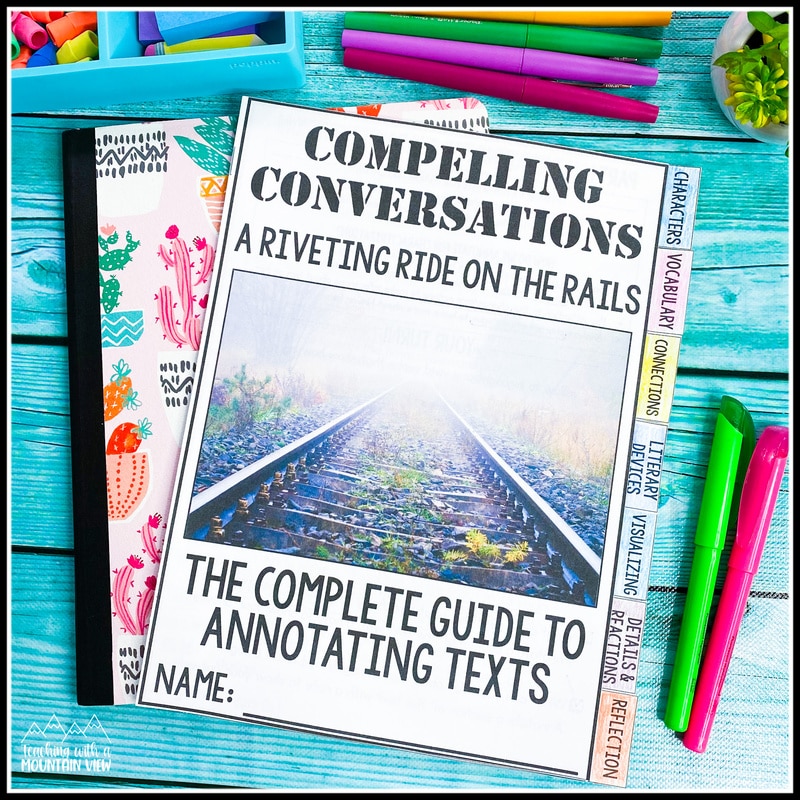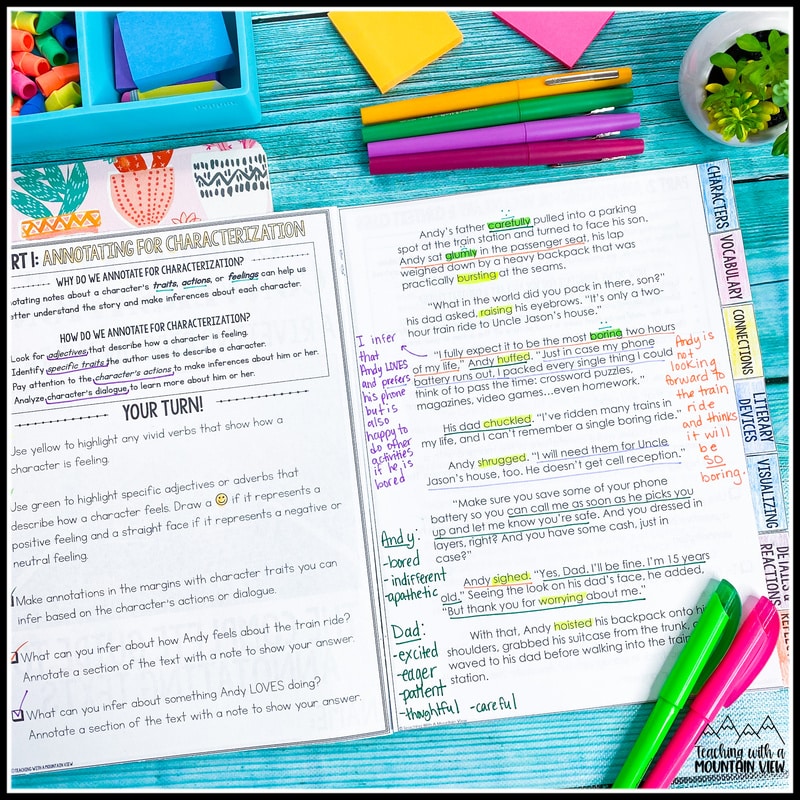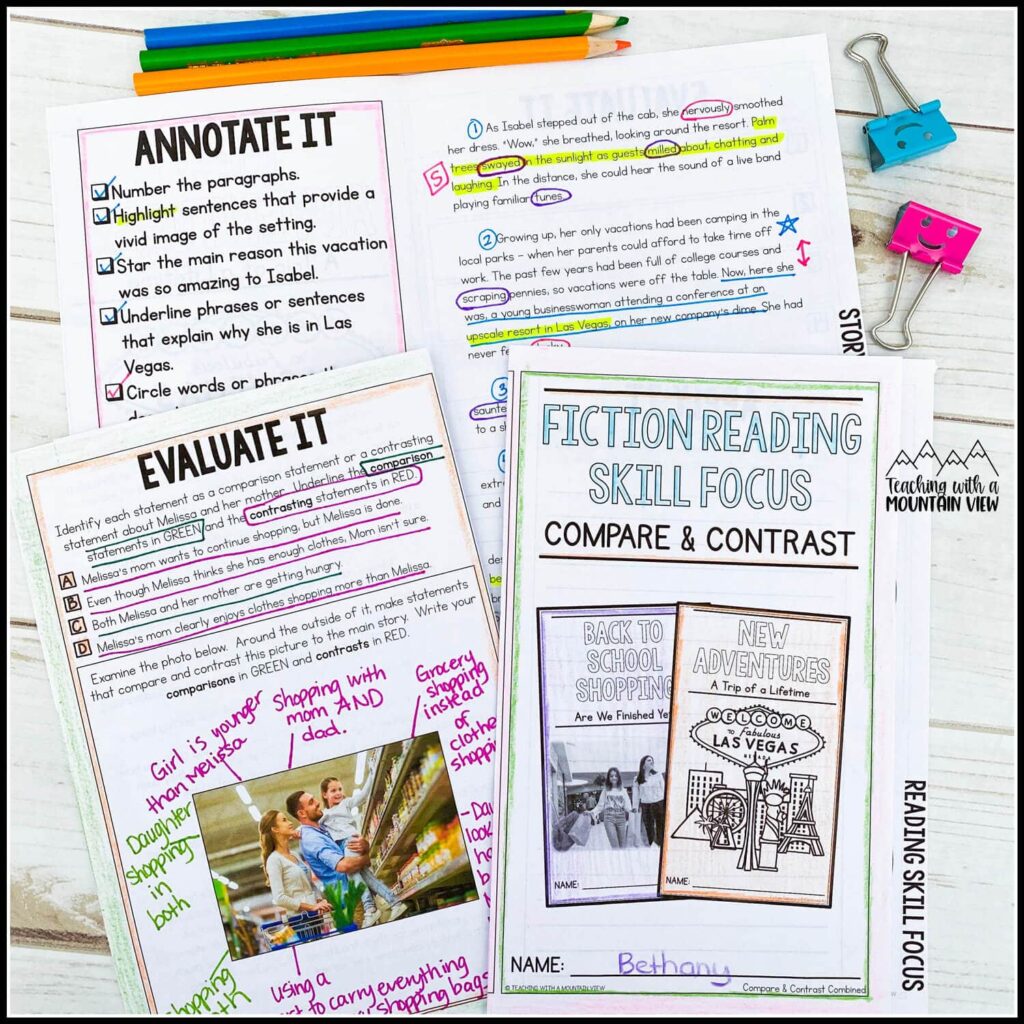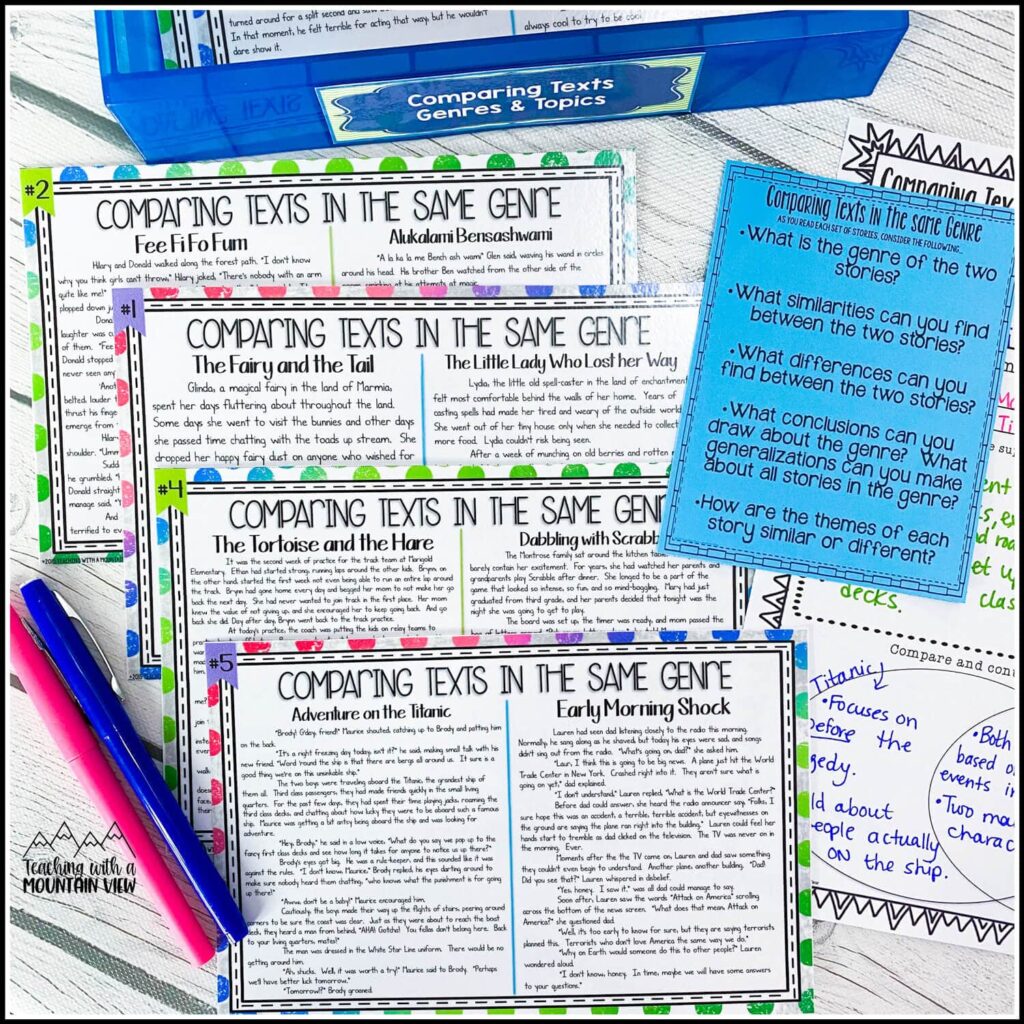Comparing Texts: Moving Beyond the Basics
By Mary Montero
Share This Post:
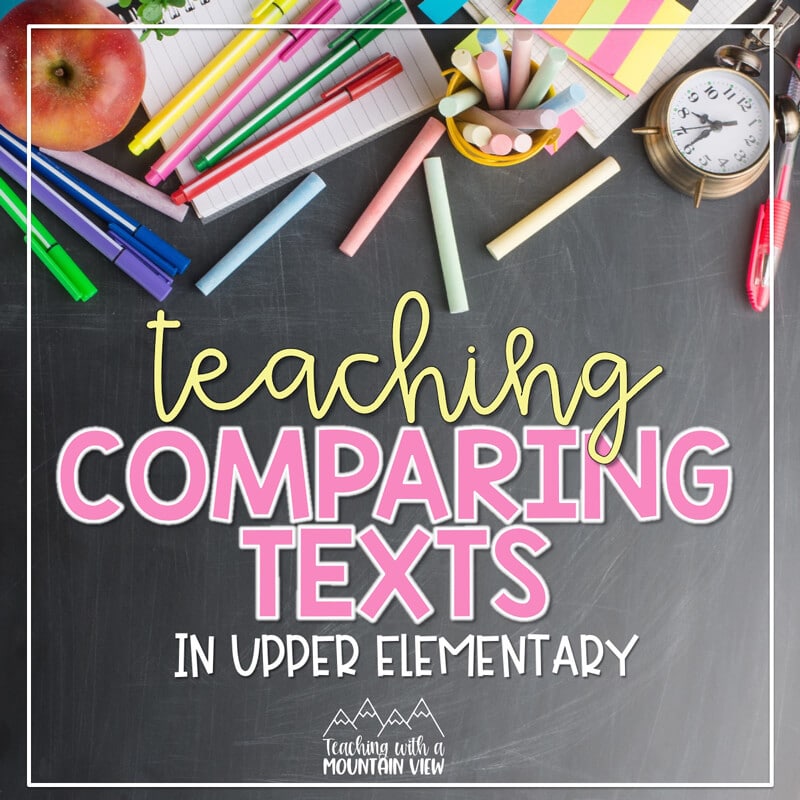
It’s true. Comparing texts can be tedious, especially when you are teaching students in grades 3-5 how to thoughtfully compare and contrast multiple texts! Of course, it’s a must-teach skill because comparing texts helps increase understanding for students, increases critical thinking skills, and it reinforces so many crucial reading skills.
When you ask students to look at two texts and compare them, you’re asking them to pay attention to all sorts of features from the characters to the theme to the style and writing of the text. So often, students get bogged down in basic text comparisons when we can dig so much deeper! I’ve compiled some of my ideas, thoughts, and resources for teaching students to thoughtfully compare and contrast texts (both fiction and informational).
Before you dive into this blog post, I have some other comparing and contrasting blog posts that might be just what you are looking for!
- Click HERE if you are just getting started teaching your students how to compare and contrast.
- Click HERE if you are looking to specifically teach comparing and contrasting with text structures.
- Click HERE if you are teaching students to compare firsthand and secondhand accounts.
Annotate Texts
This one might seem really obvious, but it’s a step we tend to skip when we have multiple texts to evaluate, and it should really be the very first step we are always taking when comparing passages. Annotating texts and/or close reading is so important to ensuring students have a good grasp on what they are reading beyond surface level comprehension. Any time we are looking at multiple passages (not necessarily books, in this case, but passages), I always have my students do at least a brief annotation of the texts.
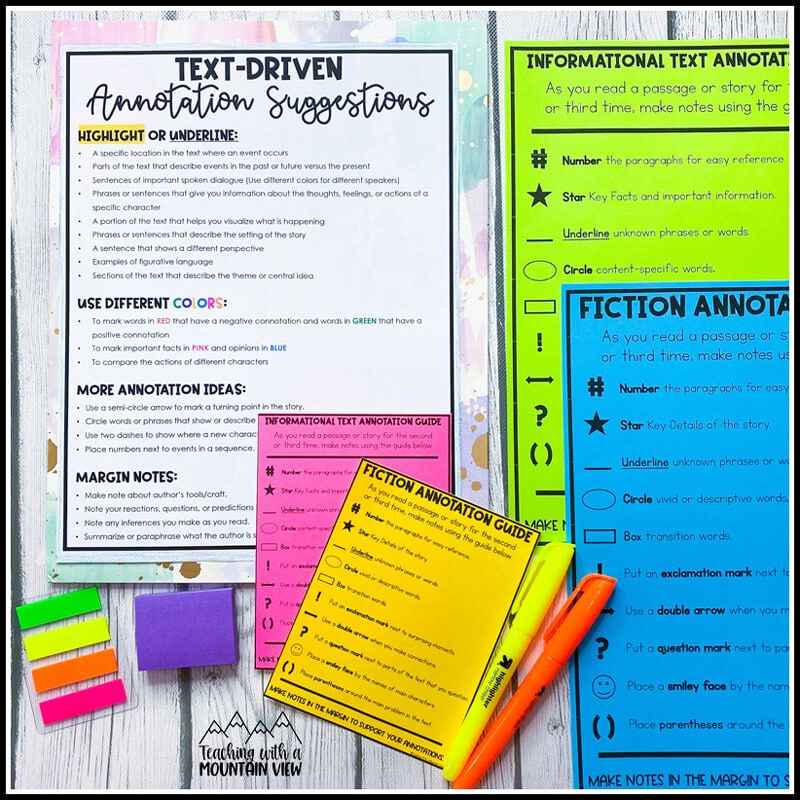
Teaching students what and how to annotate can be daunting. That’s why I created this one-stop introduction to annotating! It helps students understand what types of things they should be looking for and annotating as well as how to annotate texts. This unique format is engaging to students, highly effective, and easy to implement. It contains a 6-part story, and each part of the story contains an annotation guide that explains why and how to annotate for each specific skill.
Focus In
While I would love to dive in with dissecting all elements of stories, I find it a bit easier on students if I start by dissecting one major reading skill per pair of stories. I created paired passages with that purpose in mind, and this is always the starting point for me. We start, of course, with the Compare and Contrast paired passages. Then we move on to the others, which allow students to work on their annotating skills, master specific reading skills, and become accustomed to comparing and contrasting texts.
Beyond reading skills, I also explicitly teach my students to compare and contrast genres as well as compare and contrast informational texts, two totally different skills.
Most grade level standards call for students to compare and contrast stories in the same and different genres. While there are SO many excellent picture books that you can use for this, I find that having concrete passages designed specifically for comparisons make it easier for students to dabble with this skill, so before we start applying this skill to our novels, I make it a point to use these task cards for comparing stories and genres.
We start by using the cards that have two stories in the same genre. We dissect them using these prompts, and students really get the hang of it! After a while, I will give them two stories that are from different genres, and again, we chat about the differences in genres.
Since I always start with fiction for comparing, we then move on to comparing and contrasting informational texts. Again, I use these task cards that have been designed specifically for this skill to make it an easier transition to authentic texts. These are also very similar to the Genre Task Cards, which makes it easy for students to approach them and work with them, even if they aren’t as comfortable with informational texts.
Use Manipulative Graphic Organizers
Once we have looked at all the different things we could compare in paired passages (by using the paired passages and task cards above), it’s time to put it all together! Even though we’ve gone through them all, it can still be a bit overwhelming for students to think of ALL the different parts of the story that they need to compare and contrast. Graphic organizers come in super handy for this part!
Venn Diagrams are the go-to for organizers when it comes to comparing and contrasting two texts, but I am also a HUGE fan of Thinking Maps and their double bubble (If your school doesn’t use Thinking Maps, I HIGHLY recommend them!).
Using a graphic organizer that you can manipulate is super fun, too! I print out, laminate, and stick magnetic tape on the back of a bunch of different parts of a passage or story that we can compare/contrast. I make a t-chart on the board with a Same or Different heading. As we discuss, we move these around on the board as we do a quick discussion about basic similarities and differences between the passages. For example, I’ll have movable parts for the following story elements:
- Setting – Time
- Setting – Place
- Theme
- Topic
- Problems
- Main Characters
- Author’s Purpose
- Point of View
- Perspective
- Genre
In my classroom, I tend to use magnets on my board and move the various ideas around. For example, when my students were talking about the theme of two different poems, one group thought the themes were different the other thought it was the same. How they interpreted the poem changed what they thought the lesson was. Instead of saying one was right and one was wrong (because they were both technically right) we moved the theme from similar to different several times and having important discussions about why.
You can easily manipulate graphic organizers in several other ways when you are comparing texts. You can use sticky notes (give me all the sticky notes!), your Smart Board, as well as physical props or representations of ideas.
Dive Deeper
Because comparing texts can get so complex, some kids tend to stick with the surface-level information like comparing the gender of the protagonists. To go beyond the basics, you can delve deeper into the world of the stories and ask students questions like:
- What are the protagonists’ goals?
- How does the antagonist or other characters interfere with this goal?
- What was the setting of each text?
- How did the different/same setting of each text impact the stories?
- What was the theme of each text?
- How do the themes connect, even if they are not the same?
- What was the solution to each text’s problem?
- How were the solutions similar or different from one another?
Having questions that ask your students to think about the text on a deeper level and compare ideas can be a great way to teach universal themes, common goals, or show there are different ways to solve problems.
Beyond the content of the stories and story elements, you should compare text elements. Elements of the text you might consider discussing could include:
- Pacing
- Style
- Structure
- Word choice
- Figures of speech
Encourage students to consider how each of these text elements impacts the story.
Add a THIRD Piece of Media
Instead of just looking at two texts, add in a third nonfiction text related to the stories or ask students to relate to the text by making connections to their lives. Add a video or movie that relates to the topic. Consider showing a firsthand account of historical fiction books. Whenever you ask students to relate something back to themselves or another piece of media, a deeper understanding is generated. When this happens, they gain a deeper appreciation of and connection to the subject.
In addition, when you add a nonfiction element, you show the relevance of the stories that you are reading, they have a better understanding of why some of the events occur the way they do, and you can even get the bonus of connecting different subjects!
Reference an Anchor Chart
Anything you have posted on the walls of your classroom should be something kids will reference over an over. When you are drawing comparisons between two or more texts make sure you are using the anchor charts you have already put time into. Having words that compare and contrast on your word wall is important and should be pointed out when you are comparing two texts.
Ask your students to write out the comparisons they can draw from the text using a variety of words from your word wall. Have them practice different ways to make comparison statements so that their text doesn’t become stale. In addition to your word wall, you can also have sentence starters available so students can learn to identify and write about comparisons between two different texts.
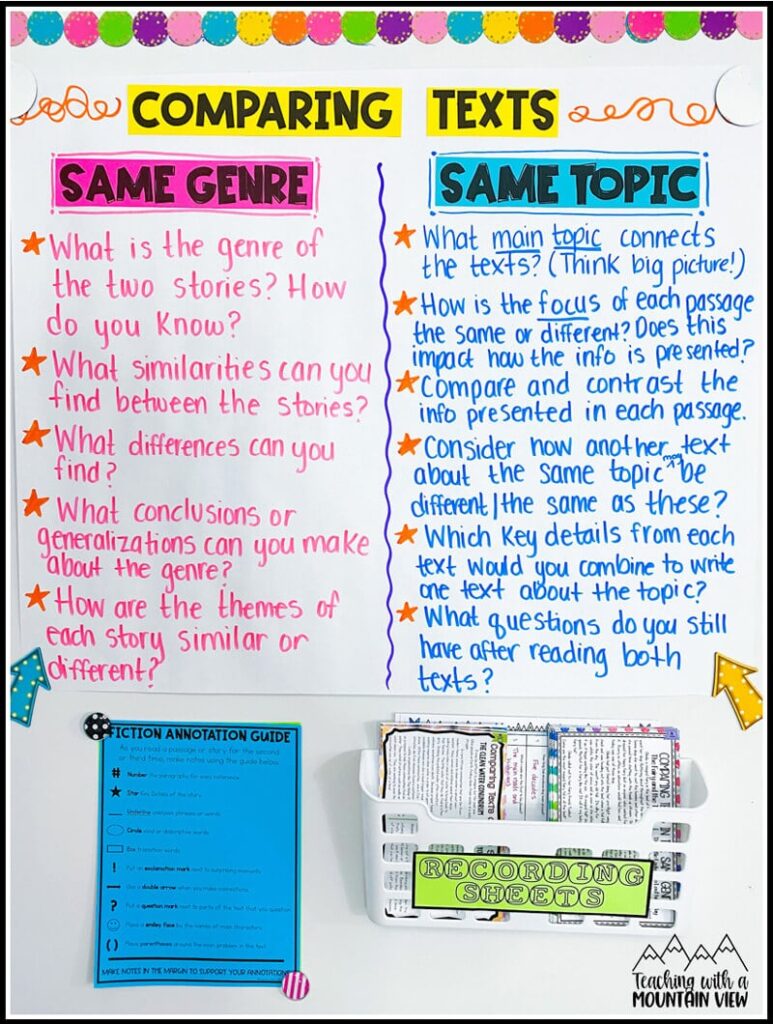
Make it Matter
One of the biggest things for my students is always making it matter to them. Relevance or answering the “Why am I learning this?” question is always my ultimate goal. One way to make sure your comparisons of texts matter is to always link it back to a real world connection. When you make the content relevant to their lives it will always stick and have more meaning. This can be as simple as a quick conversation about how it’s relevant to their lives.
Resources for Comparing and Contrasting Texts
The following are different books and resources I use to specifically hone in on these skills:
- Using Pictures: Of course, this is one of my favorite ways to introduce this skill on a more surface level! I will put up two pictures, and we just dig DEEP into them and do a ton of comparing and contrasting. You can choose your own pictures, or you can also get a set from my Using Pictures to Teach Reading Skills resource.
- Books vs. Movies: This is a classic comparison and one that students just adore. If you are teaching this skill in the wintertime, I highly recommend comparing the original version of Rudolph to the movie, but there are endless options that make this an easy starting point.
- Paired Passages: As I mentioned in step two above, this is another great, guided way to delve into this topic. I like to work on this skill throughout the year, so I created sets of paired passages that SPECIFICALLY focus on comparing one reading skill throughout the stories. It has been so impactful to see my students be able to really, truly dissect one reading skill through the lens of two connected stories.
- Fractured Fairy Tales: These are THE BEST and there are endless options. Upper grades teachers, don’t shy away from these just because you think your students may not be interested in them. THEY WILL! There are so many fractured fairy tales out there that make this so interesting. Click HERE to view my favorite Fractured Fairy Tales (affiliate link). Some of my favorites are “The Other Side” books where you can compare and contrast perspectives!
- Comparing Genres and Topics Task Cards: Like I mentioned above, these two sets of cards are staples in my classroom all year long so that students have a solid grasp on these skills so that they can apply them to their classroom texts. Click HERE to view the genres set or HERE to view the informational texts set.
Understanding how authors use similar features and devices to achieve the same goal is a part of understanding the author’s purpose. However, it’s easy to just scratch the surface of these texts. Instead, use the tips above to dive in deep and create a deeper understanding and appreciation for the texts.
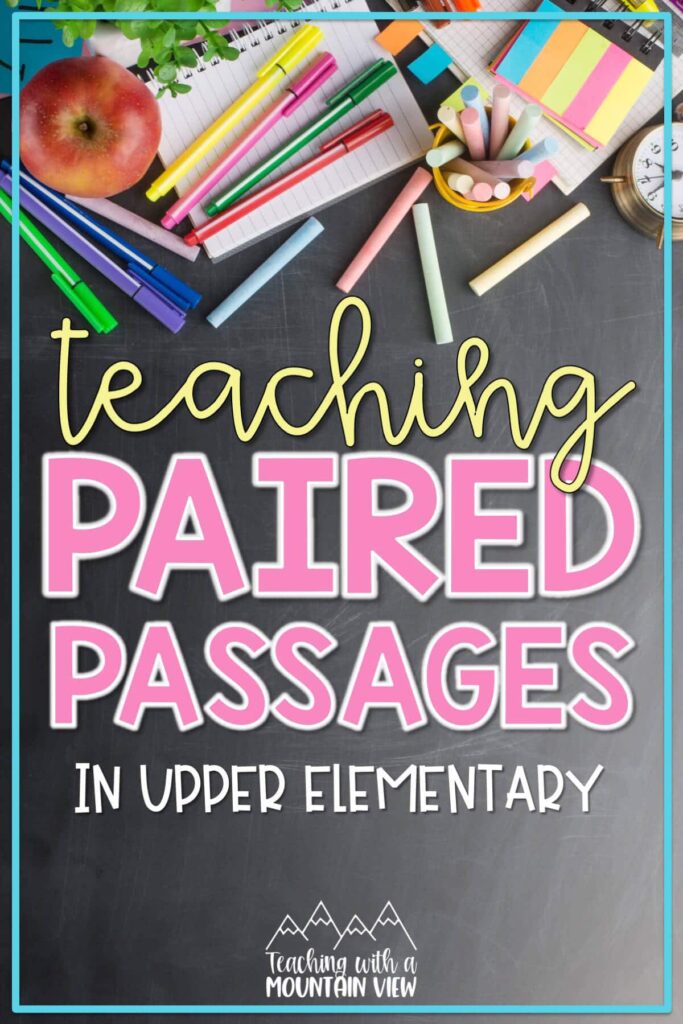
Mary Montero
I’m so glad you are here. I’m a current gifted and talented teacher in a small town in Colorado, and I’ve been in education since 2009. My passion (other than my family and cookies) is for making teachers’ lives easier and classrooms more engaging.







